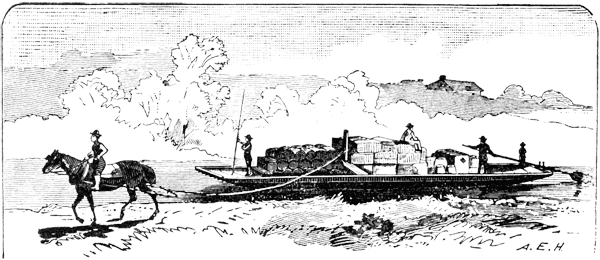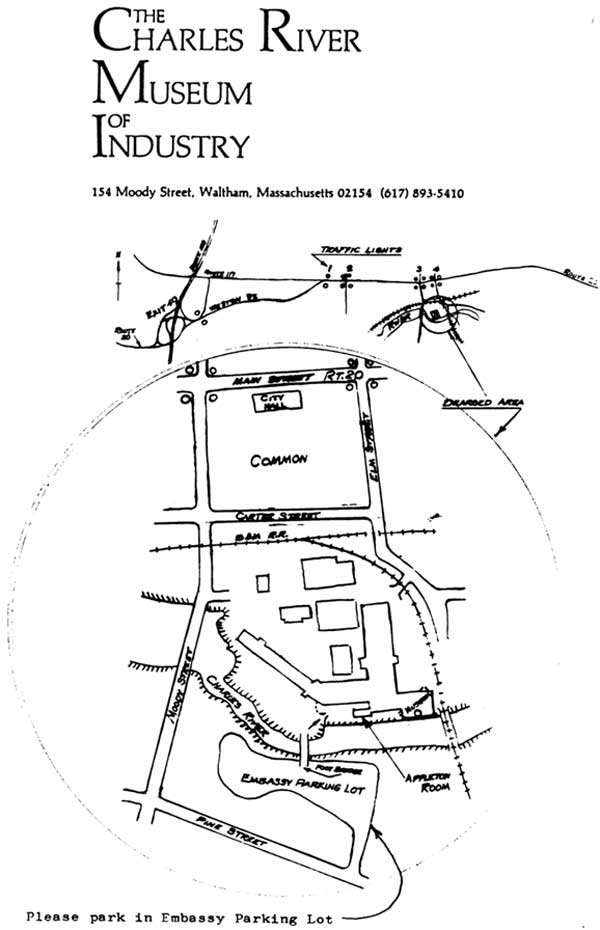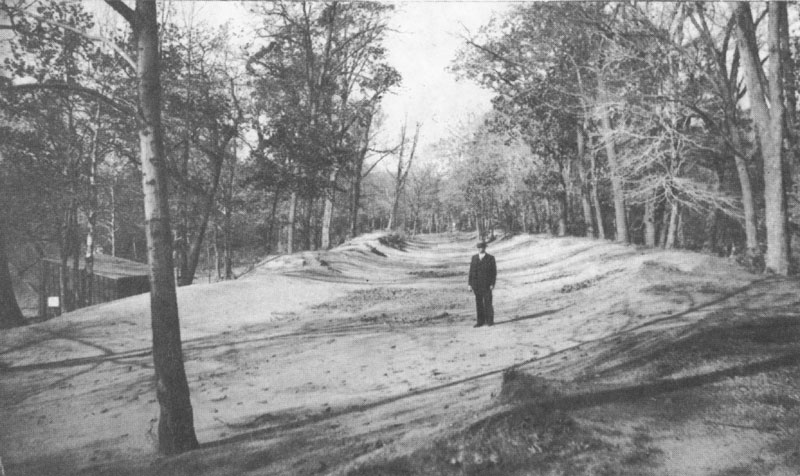


Middlesex Canal Association P. 0. Box 333 Billerica. Massachusetts 01821
VOL. 23, NO. 2 April,
1985
ANNUAL SPRING MEETING
WHEN - Saturday, May 4, 1985 at 2 P.M.
WHERE - CHARLES RIVER MUSEUM of INDUSTRY in WALTHAM
See below for directions to the Museum
PROGRAM
The Charles River Museum is located in the Boiler House of the Former Boston Manufacturing Co.'s mill complex, now a National Historic Landmark. It was here that the Lowells originated the textile manufacturing system which became the pattern for the textile industry during the first half of the 19th Century.
We believe you will find this to be a most interesting meeting. Please come and bring family and friends.

The Records of the Middlesex Canal Corporation:
An Enduring Legacy with a New Finding Aid
by Thomas C. Proctor, M.A.
Introduction: Not Just Another Canal
Consider that by the time the canal era had begun in the United States, in 1816,
approximately 100 miles of canal had been constructed! Of these early canals,
only three were over two miles in length. The longest canal was the 27 mile
Middlesex Canal, built in Massachusetts with private monies during the years
1793-1803, between the Merrimack River in Lowell and the Charles River in
Boston.1 Some of the influential men involved in the
construction and operation of the Middlesex Canal include: Massachusetts
Governor, John Hancock; Boston merchant, Thomas Russell; Salem merchant, John
Derby; Massachusetts Governor, Christopher Gore; and United States Senator from
Massachusetts, Daniel Webster.
Once completed the canal transported white oak, pine, granite, pot ash, and farm produce from New Hampshire and Vermont to Boston. The canal also provided passenger service and began transporting cotton and cloth in the 1820's.
Yet the Middlesex Canal was a financial failure, officially bankrupt on April 4, 1860, though a technological wonder. America's first generation of civil engineers were trained as they constructed and maintained this three foot deep and thirty foot wide canal with its eight aqueducts and twenty locks.2 In fact, the difficulties related to the construction of this canal encouraged the invention of a dump cart, reinvention of hydraulic cement, invention of a primitive water pump, and the development of techniques for cutting and moving massive pieces of granite.3 Little wonder then that it was to the Middlesex Canal that a delegation of New York State Commissioners came to gather evidence, in 1816, in support of the technological feasibility of the 363 mile Erie Canal.4
History of the Care Given the Middlesex Canal Records
"Precisely because the historian must turn to all possible witnesses . . .
no printed statement is without its interest."5
Robin W. Winks
Professor of History
Yale University
After the Massachusetts legislatures' April 4, 1860, forfeiture and annulment of the 1793 incorporation act of the Middlesex Canal Corporation, the Middlesex County Court ordered, on June 25, 1860, that the records of the Corporation be delivered to the Clerk of Court to be guarded indefinitely "for the use and benefit of all parties interested therein." Storage at the courthouse kept the documents tightly bundled in steel boxes for some 112 years.
In 1972, the Middlesex Canal Association squired the Corporation's records from the county courthouse and placed them on deposit in the Special Collections Division of Lowell University's Lydon Library on the 10th of September. Joseph Kopycinski, Director of the Lydon Library and Archivist for the Middlesex Canal Association, began and completed the arduous task of unfolding, flattening, and organizing these long neglected records.
My interest in improving the access to both the records of the Middlesex Canal Corporation and Association began in December of 1982, when I selected the topic for my master's thesis. The practical desire to have an easier way to locate documents useful to my thesis on the canal's construction years was further encouraged by taking a year-long archival course that required the arrangement of a significant archival collection and the writing of a guide or finding aid to explain that arrangement. So with the intersection of my needs along with a desire to make the collection easier to use for others and the permission and helpful suggestions from Joseph Kopycinski and Martha Mayo, I began to work on these records in October of 1983. By April of 1984, the records of the Middlesex Canal Corporation and Association were arranged in acid-free folders and boxes with labels. Also, guides were written providing a finding aid (or index) to the documents along with a descriptive history of each collection (Association and Corporation). My model in both organizing the collections was the inventory of the Essex Company of Lawrence, Massachusetts.6
The Arrangement of the Middlesex Canal Association Records
The records of the Association are contained in 4 acid-free boxes and take up 2
linear feet of space with inclusive dates for the collection of 1790-1983. These
records were generated by the Association since its formal organization on March
5, 1964. The main divisions in the arrangement of this collection are:
Correspondence and Association Records, 1941-1983, 30 folders.
Historic Reference Items, 1912-1980, 42 folders.
Photographs, 1883-1980, 59 folders; 279 photos.
Map and Diagram Reproductions, 1790-1850, 12 folders.
Typed Manuscripts, 1902-1979, 17 folders.
Newspaper and Magazine Articles, 1850-1980, 44 folders.
(* For a fuller explanation of the arrangement of this collection see the 7 page finding aid on deposit with Special Collections, Lydon Library, University of Lowell.)
The Arrangement of the Middlesex Canal Corporation Records
The records of the Corporation are contained in 50 acid-free boxes and take up
about 30 linear feet of space with inclusive dates for the collection of
1772-1860. These records were generated by the Corporation chartered by the
Massachusetts legislature in 1793. The main divisions in the arrangement of this
collection are:
Board of Directors, 1793-1854, 2 boxes, 2 volumes
Proprietors' Meetings - Record Book of Meetings
Directors' Meetings - Record Book of Meetings Directors' Committees
Arbitration and Litigation
Treasurer, 1794-1846, 26 boxes, 16 volumes
Share Certificates
Tolls
Journals and Ledgers
Bills and Receipts
Land, 1794-1852, 1 box, 3 volumes
Deeds, General
Purchase and Sales Record Books
Purchase Record
Sales Record
Construction, 1772-1826, 1 box
Engineering
Labor
Vaughan/Rennie Correspondence
Canal Agent/Superintendent, 1801-1853, 4 boxes, 2 volumes
Record Books
John L. Sullivan and James F. Baldwin
Caleb Eddy
Maintenance and Operations
Merrimack River Canals, 1808-1853, 2 boxes, 2 volumes
Amoskeag/Blodget's Canal
Bow Canal
Cromwell's Canal
Hooksett Canal
Merrimack River Record Books
Merrimack River Navigation
Union Locks and Canals
Wicasee Canal
Miscellany, 1775-1881, 8 folders
(* For a fuller explanation of the arrangement of this collection see the 81 page finding aid on deposit with Special Collections, Lydon Library, University of Lowell.7)
Additional chapters in the finding aid to the Middlesex Canal Corporation include the following:
Short History of Internal Improvements.
Middlesex Canal Corporate History.
History and Conservation of Middlesex Canal Records.
Scope and Content Note.
Appraisal of Middlesex Canal Records.
List of Middlesex Canal Corporation Officers.
Biographical Sketches of Loammi Baldwin and James Sullivan.
Bibliography Listing Key Primary Sources and Secondary Works on the Middlesex
Canal.
Notes
1. George Rogers Taylor, The Transportation Revolution, 1815-1860. (New York:
Holt, Rinehart and Winston, 1951), p. 32.
2. Christopher Roberts, The Middlesex Canal, 1793-1860. (Cambridge: Harvard University Press, 1938), P. 33.
3. Thomas C. Proctor, "The Middlesex Canal, Republican Ideology, and the Process of Emulation: A Study of the Impact of Beliefs and Models on Technological Development in Late Eighteenth-Century Massachusetts. M.A. Thesis, University of Massachusetts, Harbor Campus, Boston, Boston, May 1984.
4. Carter Goodrich, ed., Canals and American Economic Development. (New York: Columbia University Press, 961), p. 59.
5. Robin W. Winks, The Historian as Detective. (New York: Harper and Row, 1969), p. xvii.
6. Helena E. Wright, The Merrimack Valley Textile Museum: A Guide to
Manuscript Collections. New York: Garland Publishers, Inc., 1983). Pp. 279-310.
Also, much guidance for this project was given by Professor R.
Nicholas Olsberg, Director of the Archival Program in the History Department at
the University of Massachusetts, Harbor Campus, Boston, 1983-1984.
7. The principle of arrangement, however, should be noted: organization of the Corporation's records into catagories that follow the hierarchical scheme of document generation and usage during the corporate life of the company.
CANAL ASSOCIATION NOTICE
Mr. Henry Condon's lecture 'The Middlesex Canal and Medford' drew a large
attendance to our Winter Meeting, January 19, at the Medford Public Library. For
the benefit of those who were unable to attend, as well as to preserve the
results of Mr. Condon's research, it has been proposed that his paper be
included in one or more future Towpath Topics.

BED OF MIDDLESEX CANAL NEAR MYSTIC LAKE, WINCHESTER